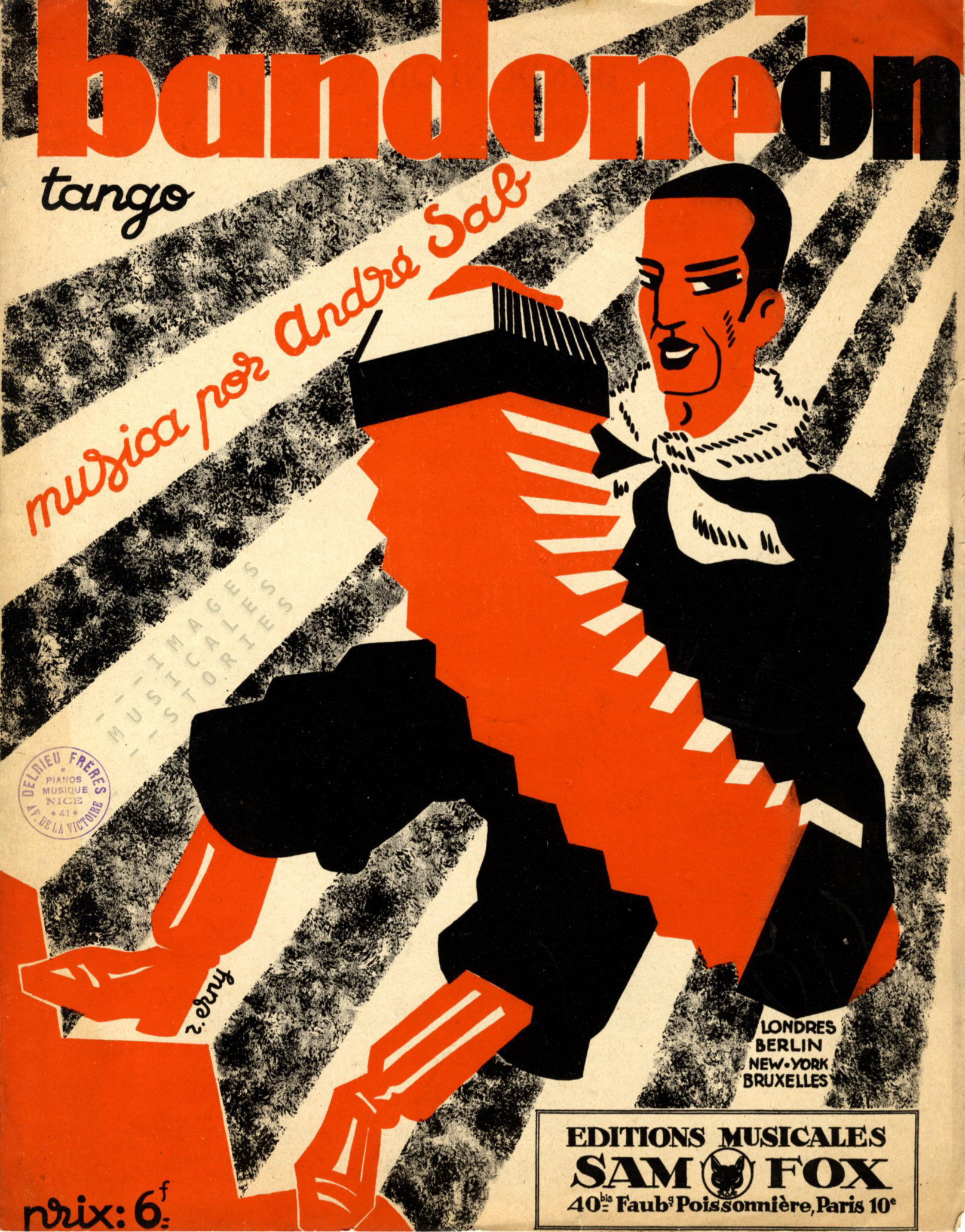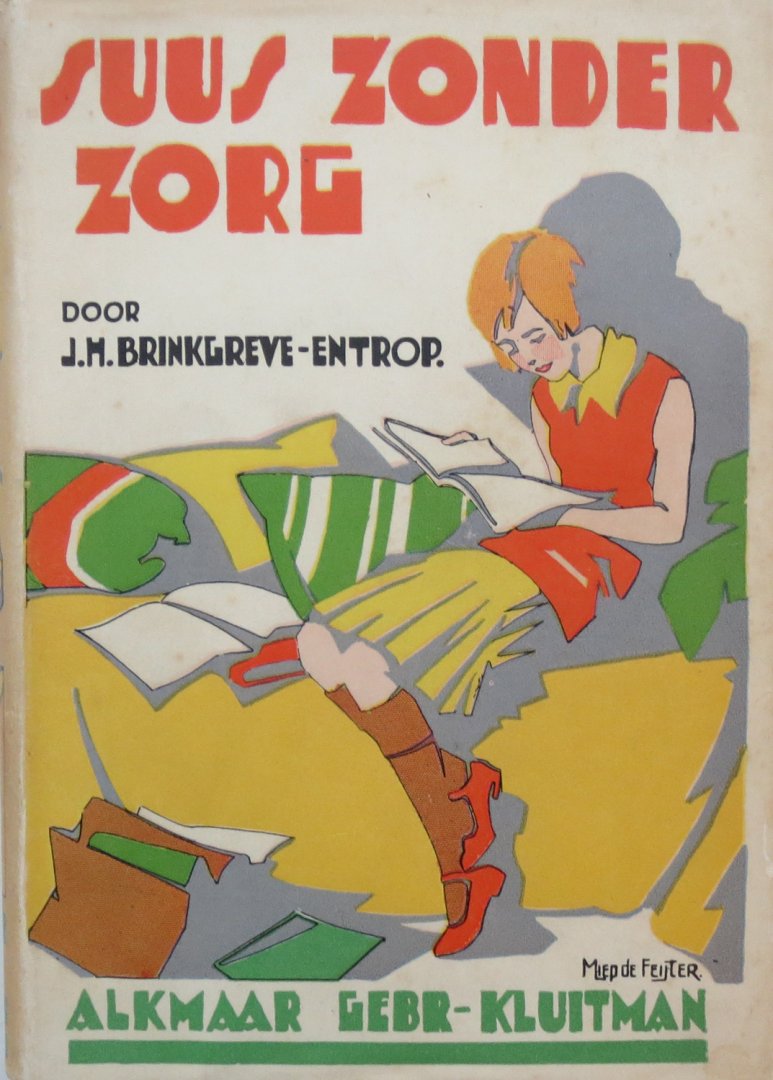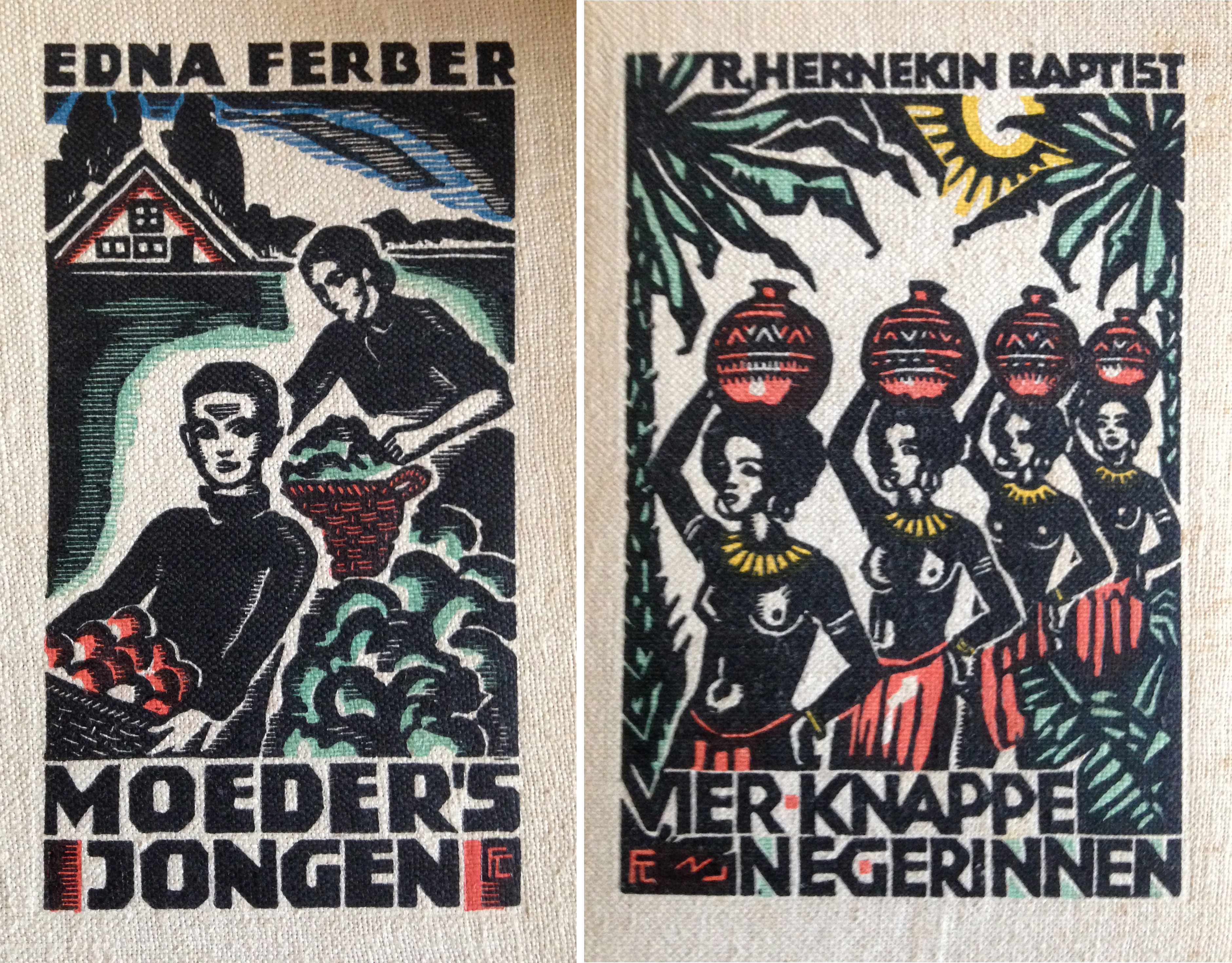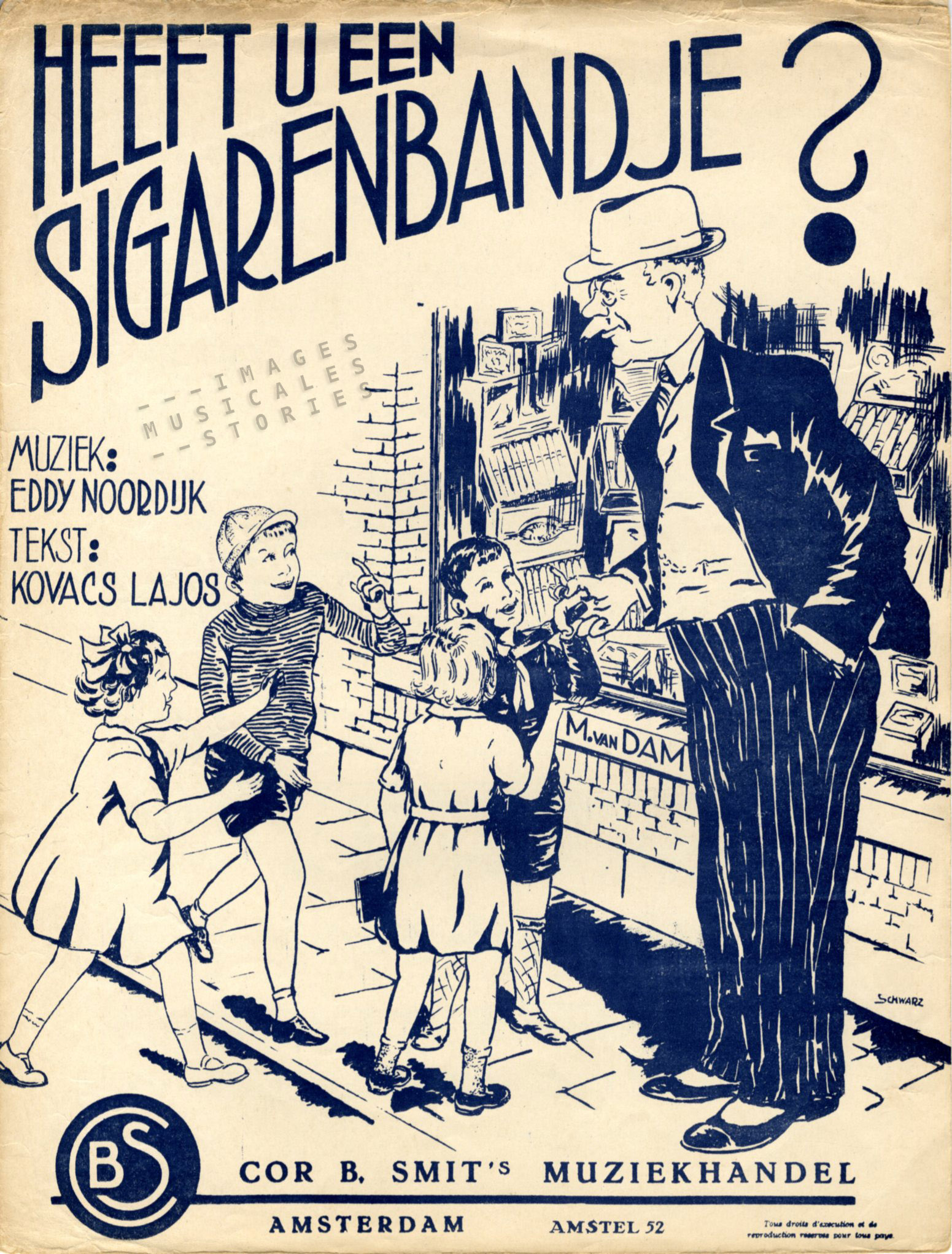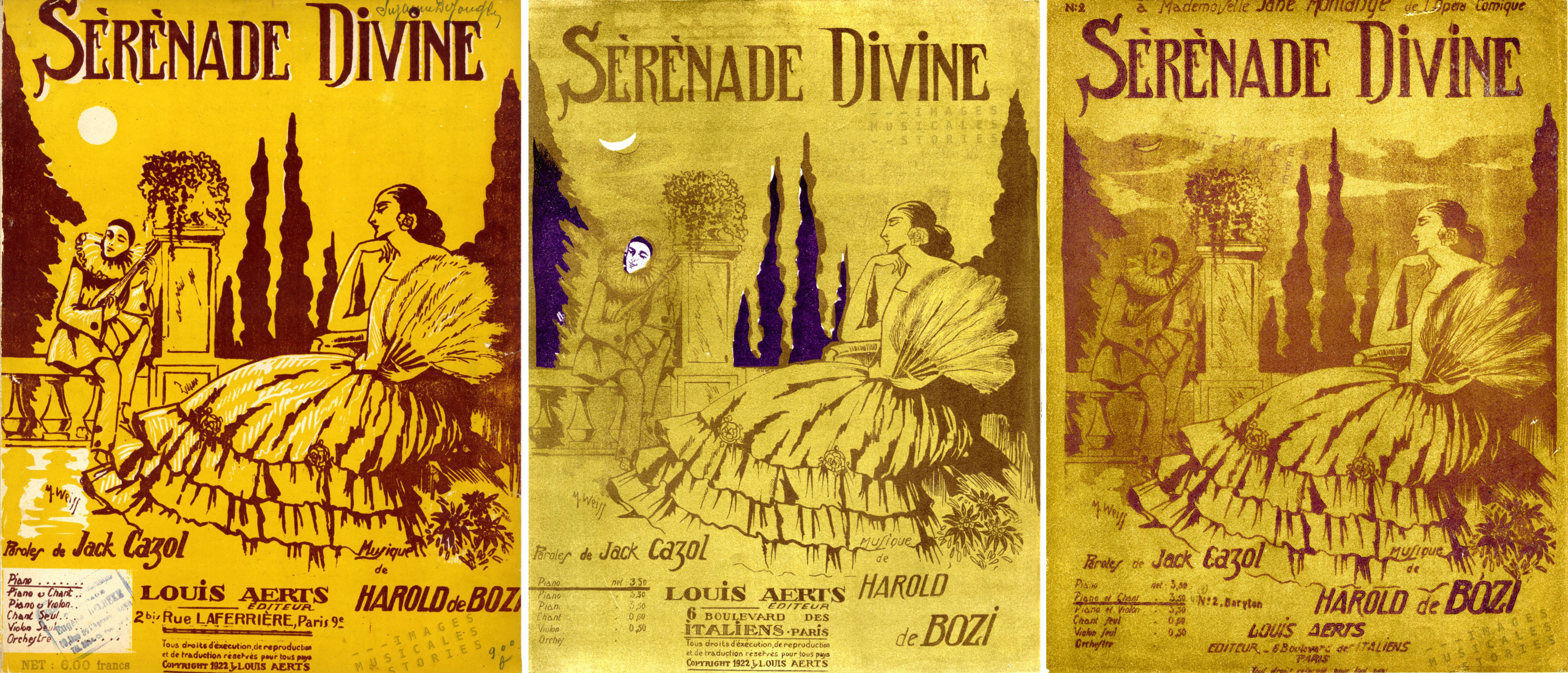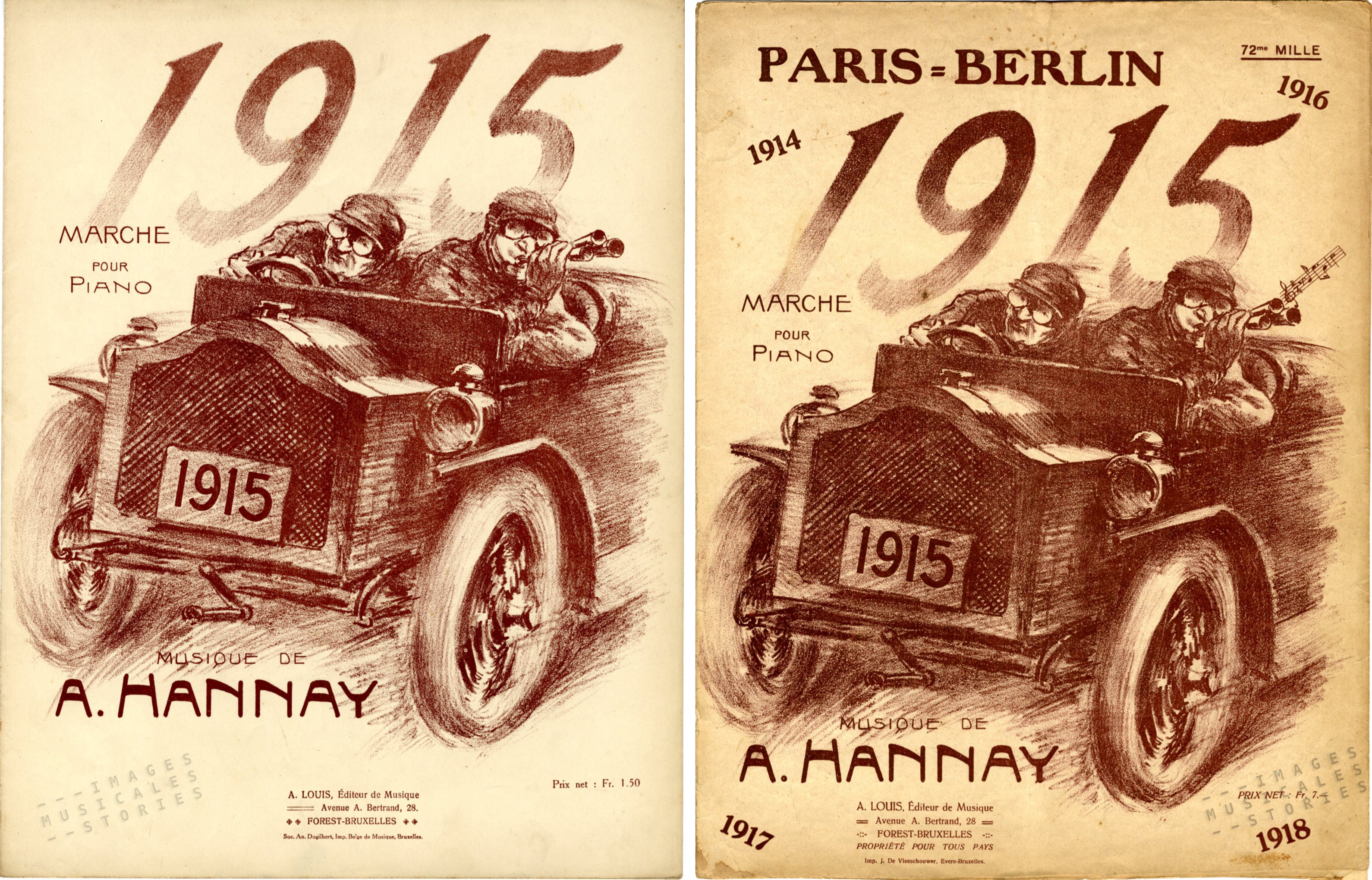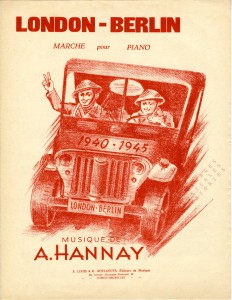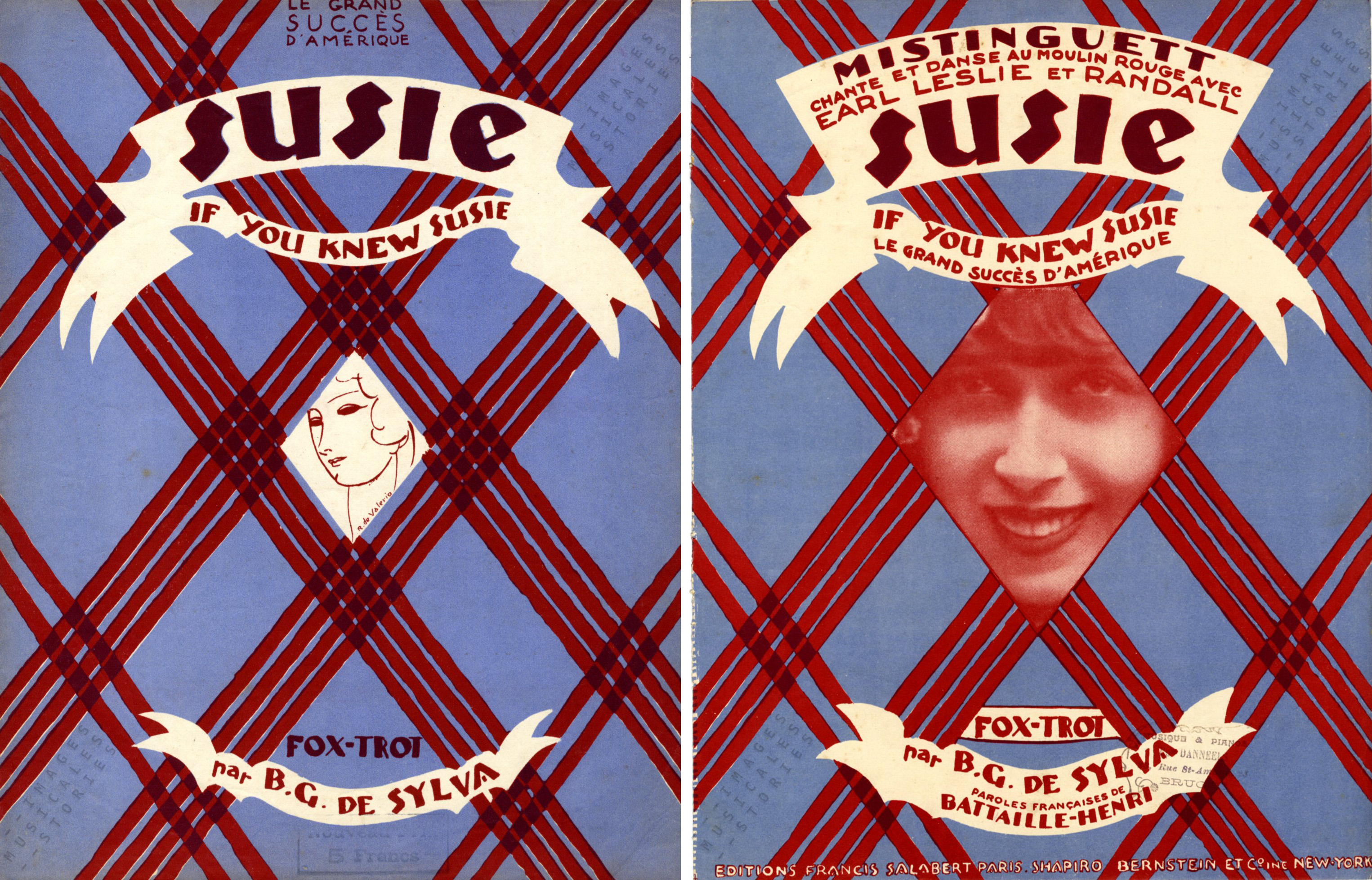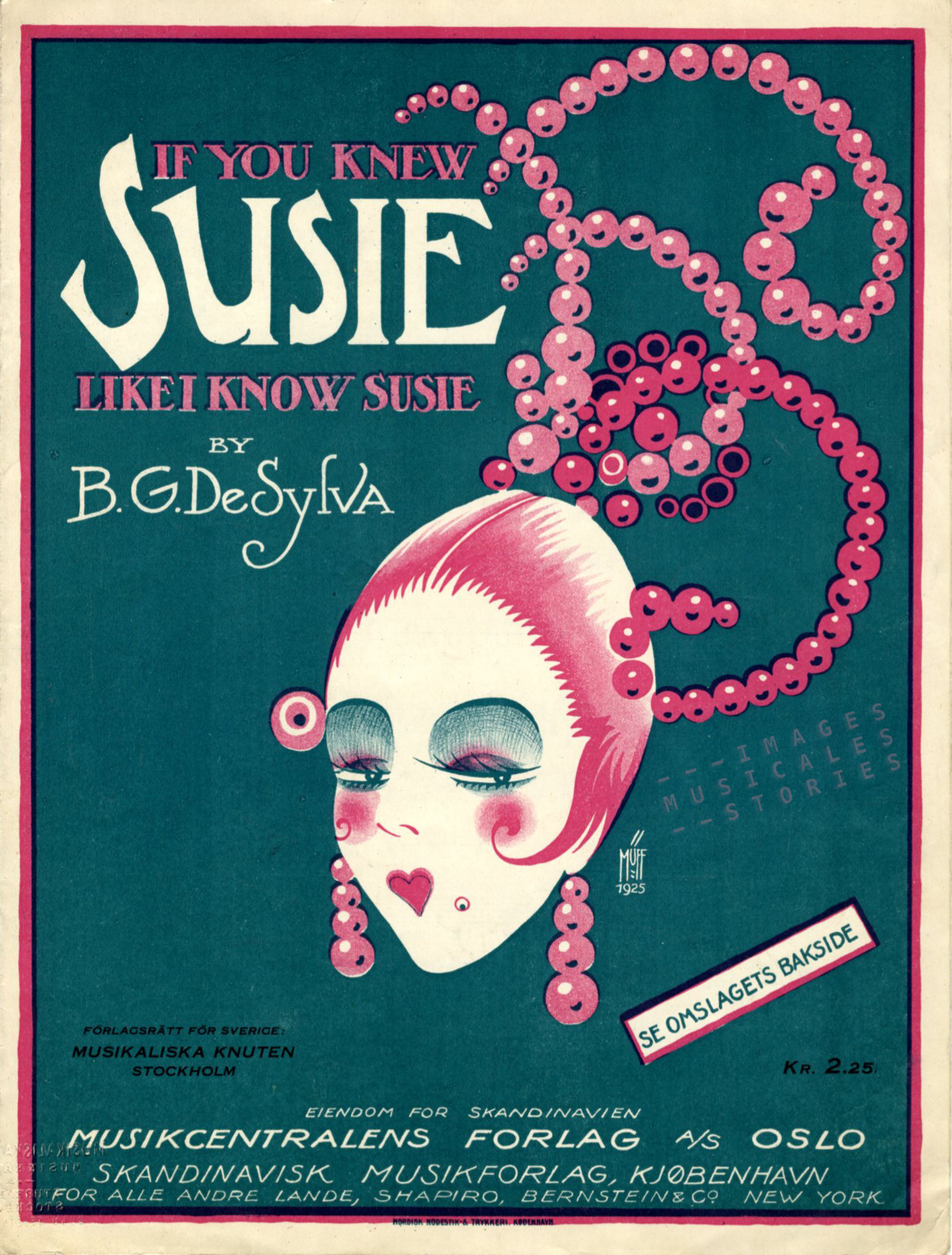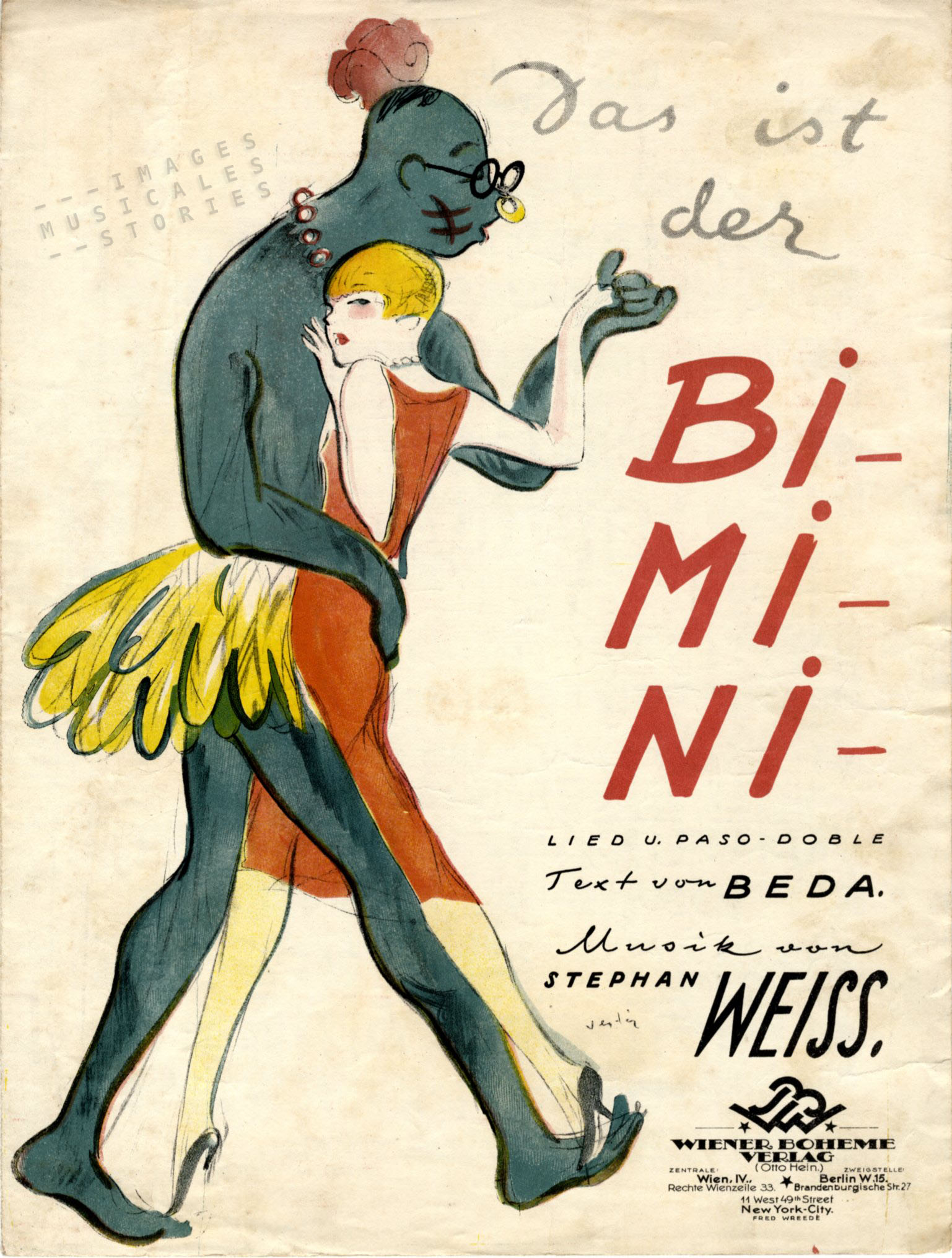
Amusing double items, over the years we have grown to cherish these lucky finds. All of the graceful flavours of print and design become apparent: subtle similitudes, minor mistakes, lost details, delicate varieties in shade, colour or contrasts. However sometimes a duplicate is nothing but a gross replication. Take for instance the small Czech songbook, that would like to be an exact copy of the over-the-top incorrect but oh so cute Vertès illustration. A mediocre but bleak reproduction if you ask me.
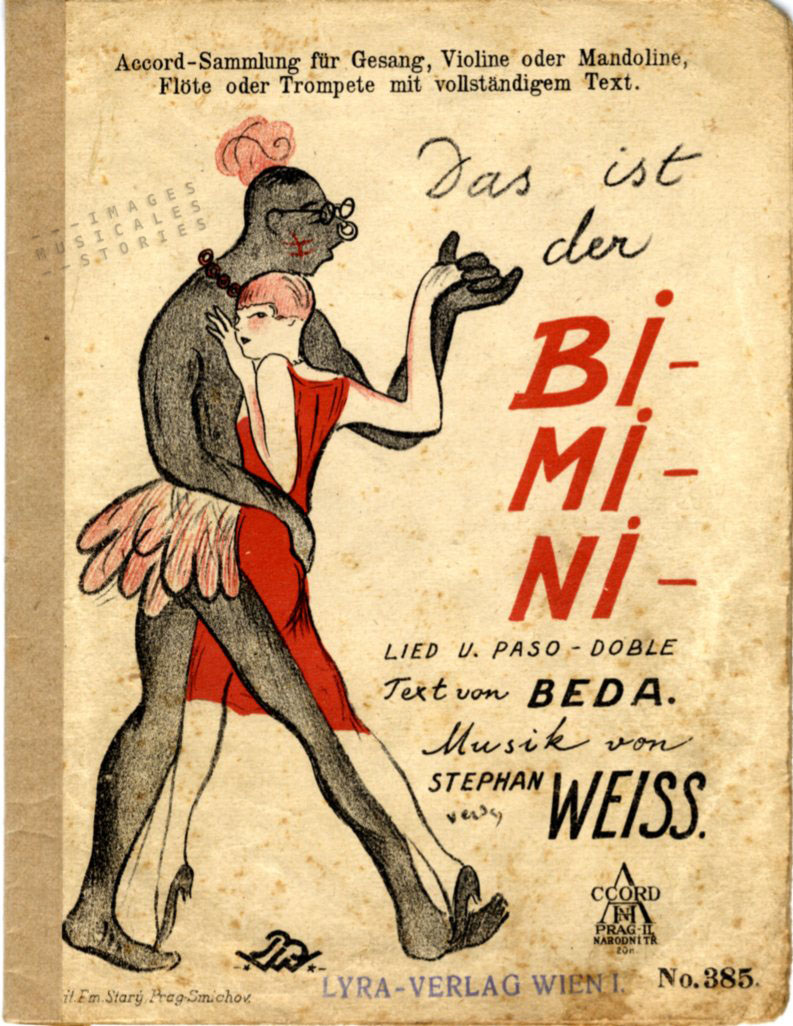
Here is another example of how an ingenious and expressive design of Marcel Vertès is muddled, wasted and ruined. It is obvious that in the French version of the Passion waltz the red and green colour plates have ineptly been aligned…

Have a look at a similar debacle, this one from the workshop of Hawkes in London. What happened, was the red ink too thick or too thin? Shouldn’t the gold have been printed first? It may be that the red ‘Gold and Silver’ waltz was an ordinary printing press reject. Which we now ironically give the status of ‘collection item’. Anyway what a shame for the beautiful drawing by W. George.

Some ‘duplicate’ sheet music are just different. Having both versions in the collection is worthwhile, and brings on a few moments of delight. As does the gliding sound of the great-grandmother of all waltzes ‘Sobre las Olas’ (Uber den Wellen, Sur les vagues, Over the Waves) composed by Mexican Juventino Rosas in 1888.
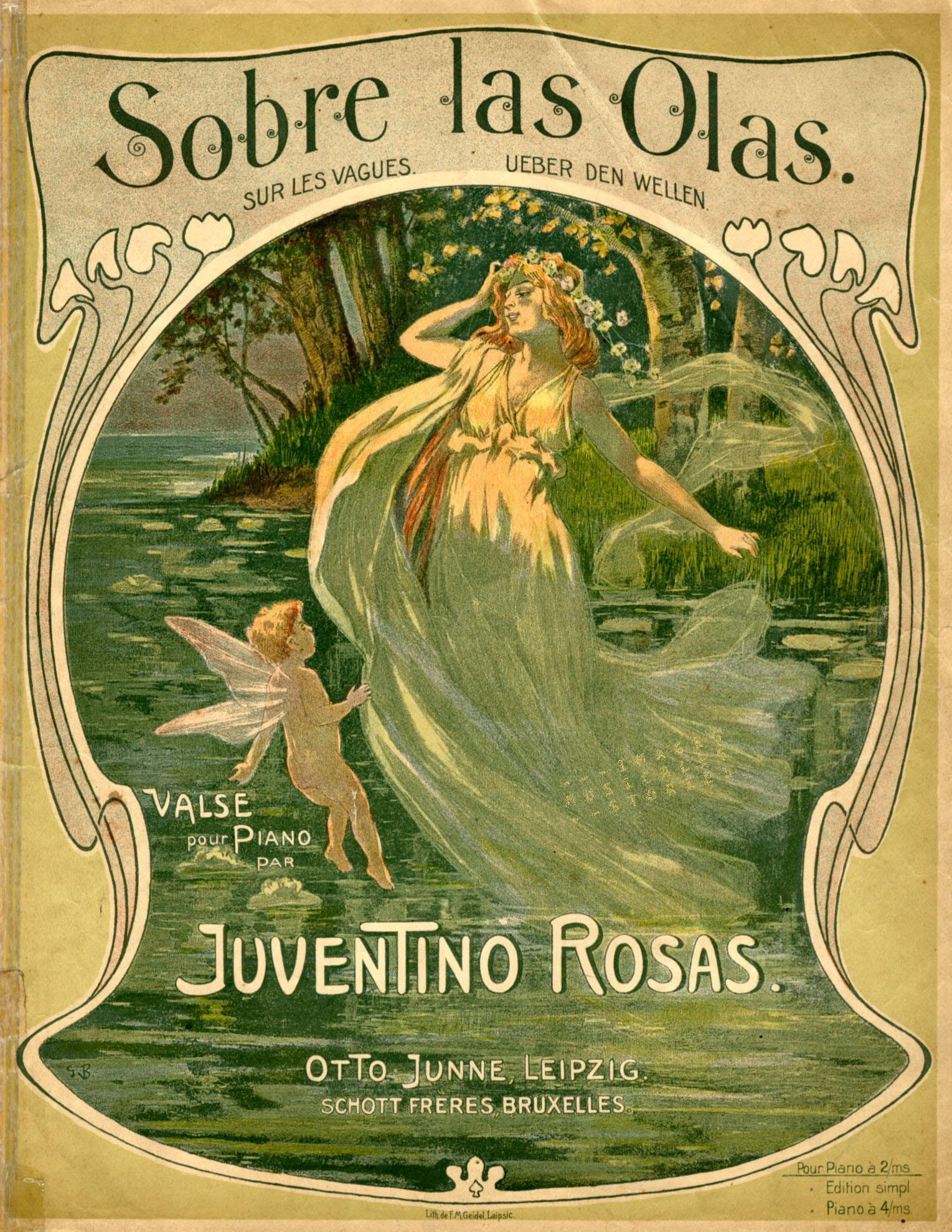
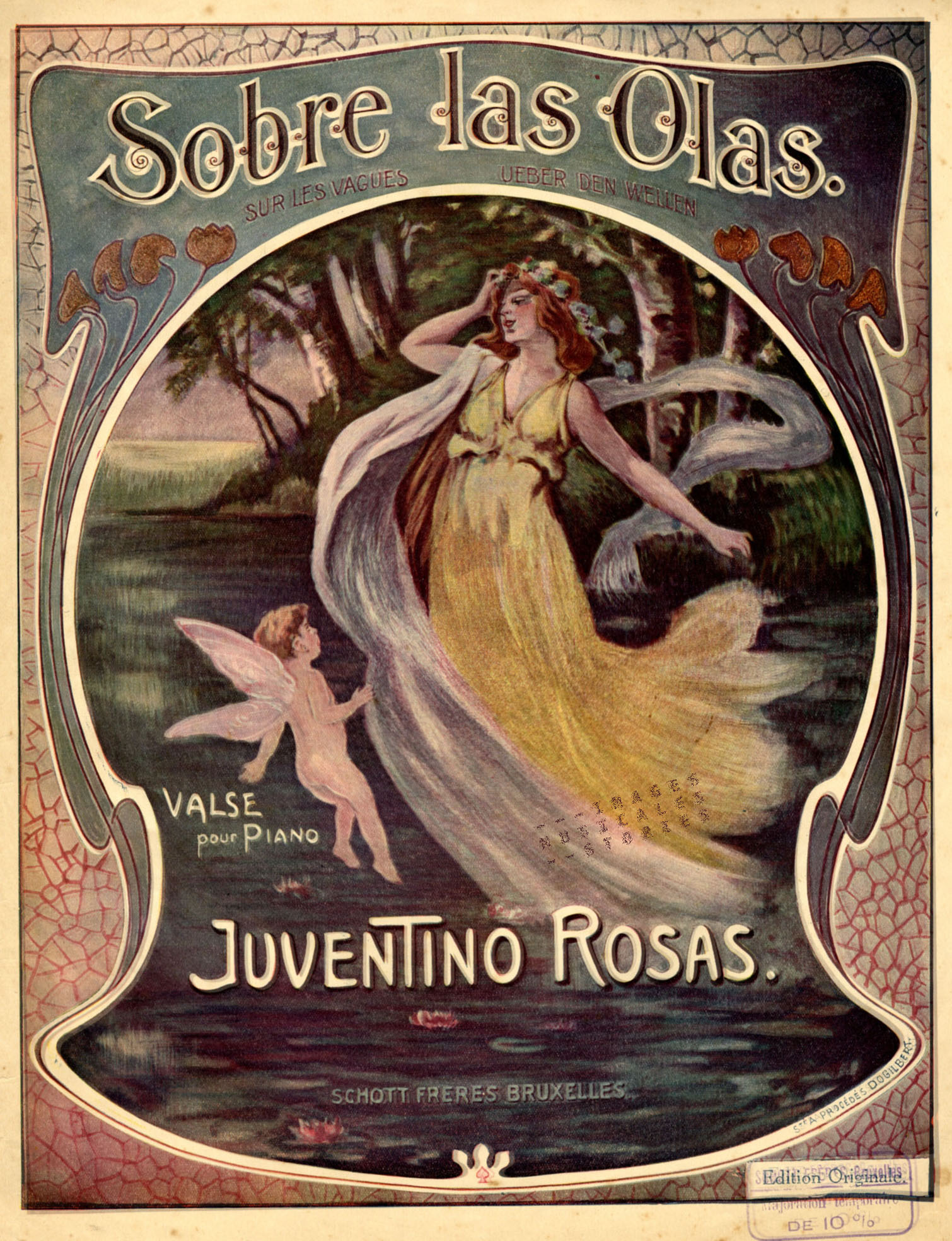
Time now for a musical intermezzo: float and twirl over the ocean waves!
All the duplicates above show essentially the same drawing. It is more fun when the same theme is drawn differently, as with this chucklesome waiter.
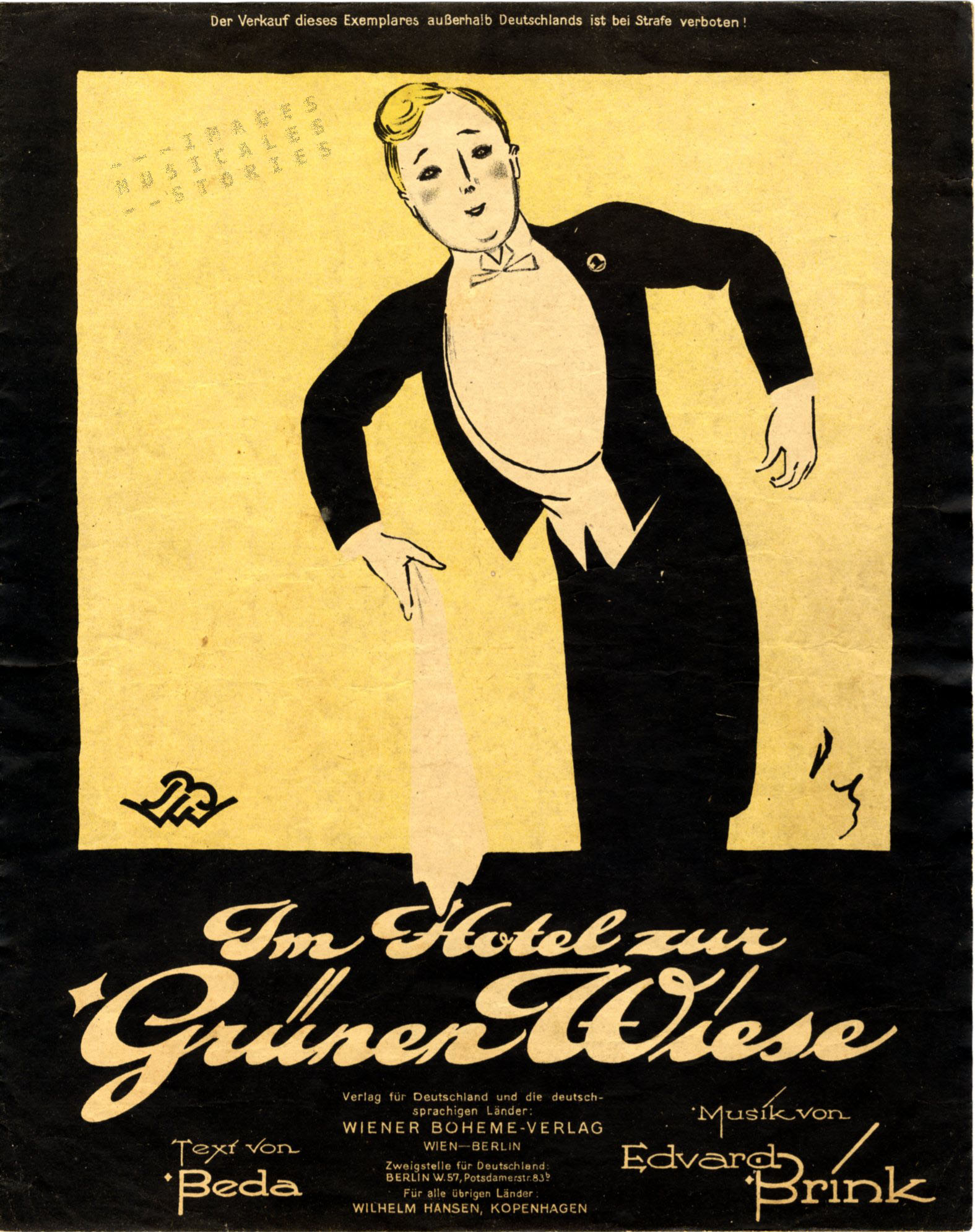
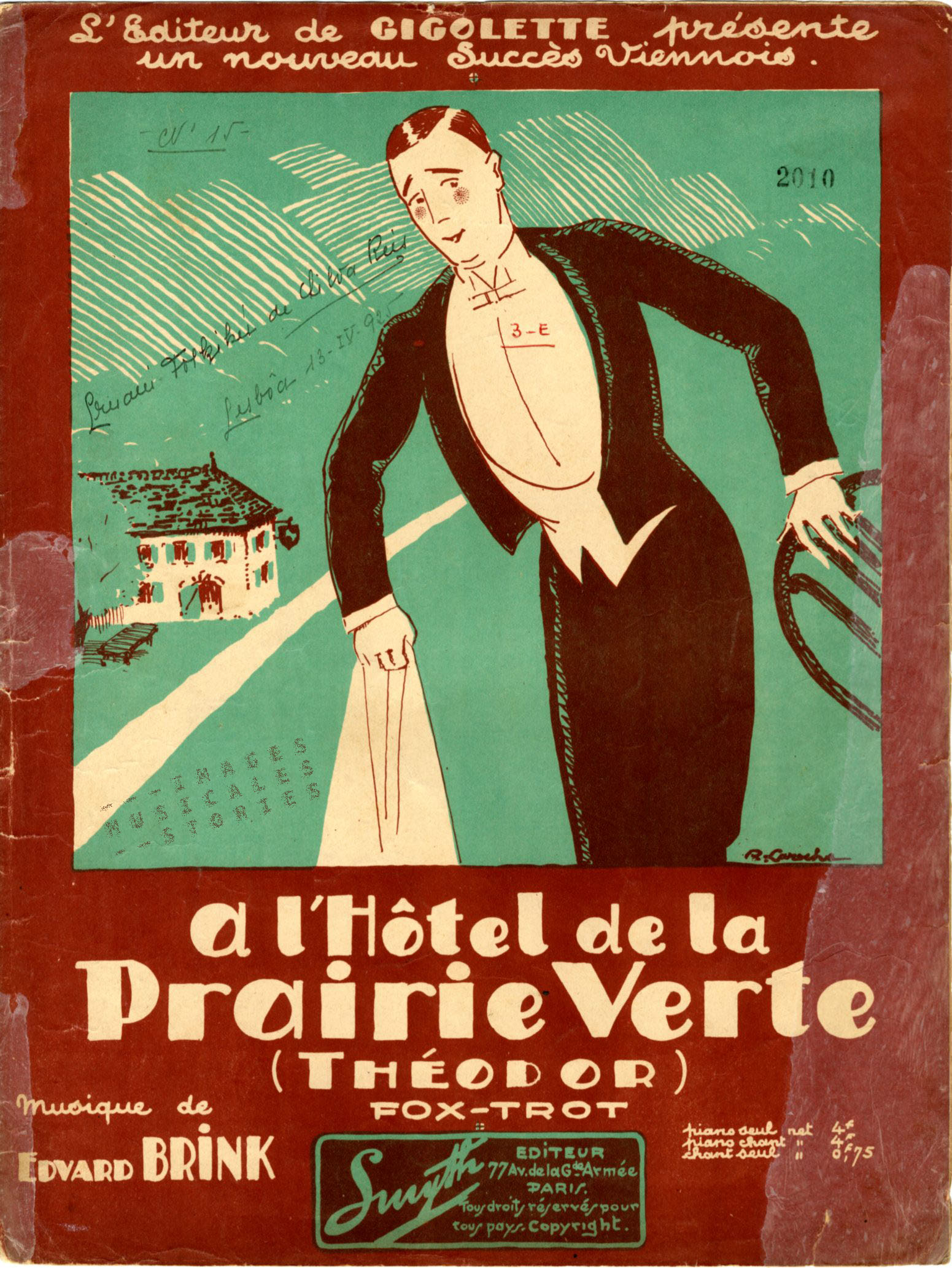
A last surprising duplicate which brings joy is The Teddy Bears’ Picnic.

The UK branch of American publisher Witmark resolutely chose for an extra row of bears.

German publisher Roehr on the other hand preferred chubby Teddies for its Baby-Bären Parade.

Strangely The Teddy Bears’ Picnic, copyrighted in 1907 by American composer John Bratton, was for many years just an instrumental number. Twenty-five years later, in 1932, Irishmen Jimmy Kennedy wrote the lyrics that beautifully accompany the two-step rhythm:
You’re sure of a big surprise.
If you go down to the woods today
You’d better go in disguise!
Will gather there for certain,
Because today’s the day the
Teddy Bears have their picnic.
Now comes the special moment: a scene from the Eighty’s serial drama The Singing Detective, wherein Michael Gambon plays crooner, detective, and psoriatic patient. Thank you Dennis Potter.
Previous posts on duplicate sheet music covers:

